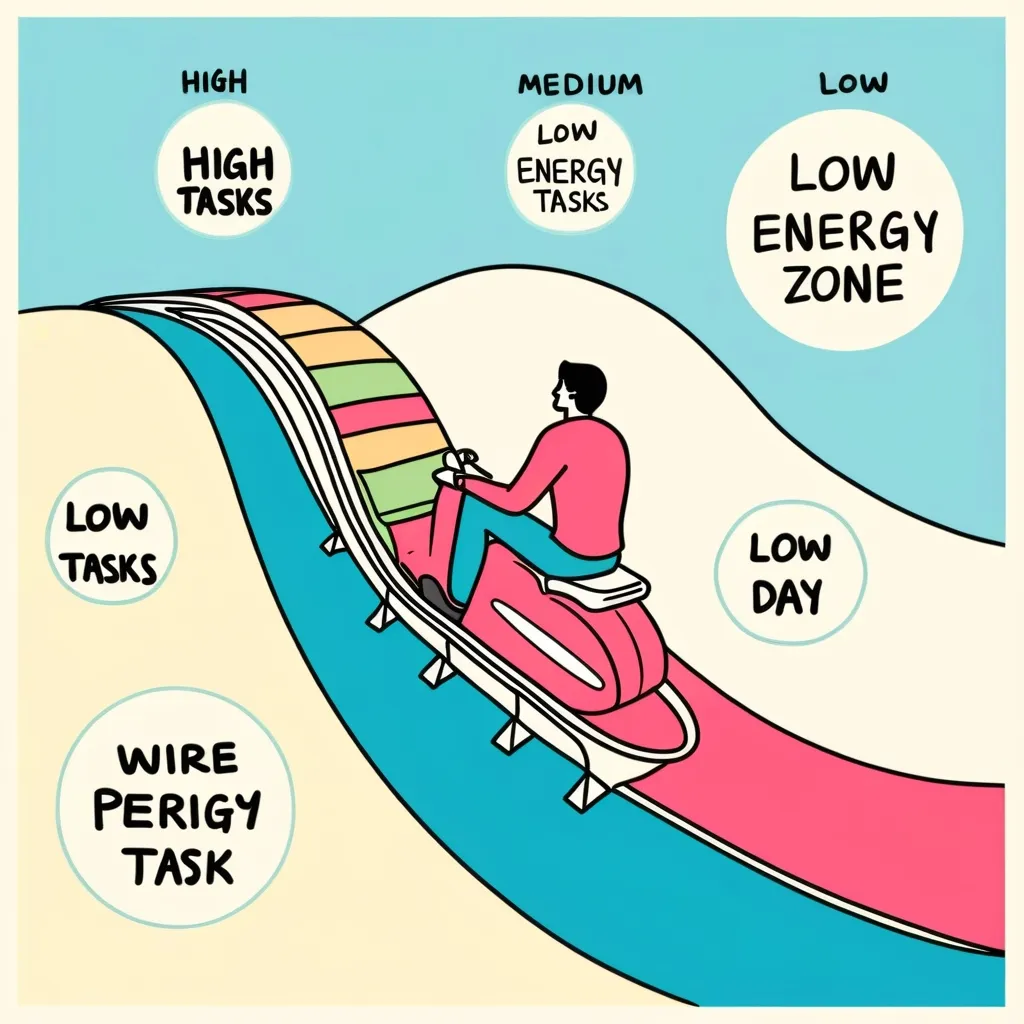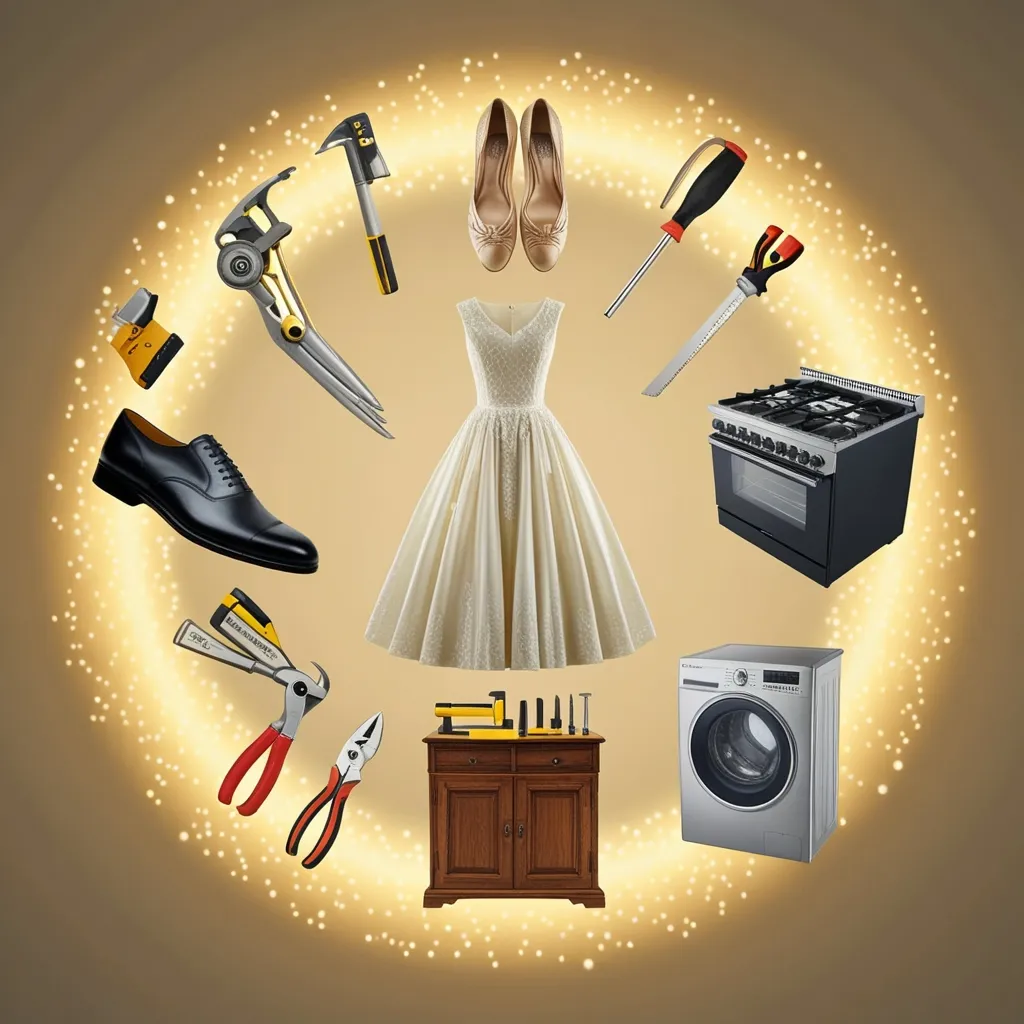Mastering Your Day: The Power of Energy-Aligned Productivity
Ever feel like you’re fighting an uphill battle with your to-do list? You’re not alone. Many of us struggle to stay productive throughout the day, often chalking it up to poor time management. But what if I told you the secret to crushing your daily goals isn’t about managing time, but about managing your energy?
Welcome to the world of Contextual Timing - a game-changing approach to productivity that’s all about syncing your tasks with your natural energy cycles. It’s like having a secret weapon in your productivity arsenal, and once you start using it, you’ll wonder how you ever managed without it.
So, what’s the deal with energy cycles? Well, our bodies have this cool internal clock called ultradian rhythms. These rhythms dictate how our energy ebbs and flows throughout the day, typically in 90-minute cycles. It’s like riding a wave - you’ve got your highs and your lows, and the trick is to surf them just right.
Think about it - have you ever noticed how you’re on fire in the morning, ready to take on the world, but come 3 PM, you’re more interested in your next coffee fix than that important report? That’s your energy cycle at work, my friend.
The beauty of Contextual Timing is that it takes these natural rhythms and turns them into a productivity superpower. Instead of fighting against your body’s natural tendencies, you’re working with them. It’s like having the cheat codes to your own biology!
So, how do we put this into practice? First things first, we need to categorize our tasks based on the energy they require. Think of it like sorting your laundry - you’ve got your heavy-duty stuff, your everyday items, and your delicates.
High energy tasks are your heavy hitters. These are the ones that need you firing on all cylinders - writing that killer proposal, brainstorming your next big idea, or tackling that complex problem that’s been giving you grief. These bad boys need your peak energy times, which for most of us is in the morning or right after lunch.
Then you’ve got your medium energy tasks. These are your workhorses - important, but not brain-melting. Think responding to emails, making phone calls, or organizing your workspace. These can slot into your medium energy periods when you’re still on the ball, but not quite at your peak.
Finally, we’ve got the low energy tasks. These are your brain’s version of comfort food - things you can do even when you’re running on fumes. Doing the dishes, scanning receipts, or light reading fall into this category. Save these for when your energy is at its lowest ebb.
Now, here’s where it gets personal. Everyone’s energy patterns are different. You might be a morning lark, ready to conquer the world at the crack of dawn, or a night owl who hits their stride when the sun goes down. The key is to figure out your own rhythm and plan accordingly.
For example, if you’re a morning person, you might block out 7 AM to 10 AM for your high-energy tasks. This could be when you dive into that critical project or write that important article. As your energy dips later in the day, you can switch to medium or low-energy tasks.
But here’s the kicker - you’ve got to be honest with yourself. It’s easy to kid yourself about how much energy a task really needs. We’ve all been there, telling ourselves that writing a 3000-word blog post is totally a low-energy task (spoiler alert: it’s not). Being realistic about the energy demands of each task is crucial to making this system work.
Now, let’s talk about breaks. You might think that powering through without breaks is the way to go, but trust me, it’s not. Your brain can only focus intensely for about 60-90 minutes before it needs a breather. So, after each focused work session, take a 10-20 minute break to recharge. Go for a walk, do some stretches, or just stare out the window for a bit. Your brain will thank you.
If you work in a team or have family commitments, it’s a good idea to let others know about your energy cycles. This way, they can avoid scheduling important meetings during your low energy periods. It’s all about setting yourself up for success.
Another cool trick is time chunking. This involves dividing your day into themed blocks of time dedicated to specific types of tasks. For example, you might have a block for deep work, another for admin tasks, and another for breaks. During each block, focus only on the tasks that fit within that theme. It’s like giving your brain a roadmap for the day.
Now, I know what you’re thinking - “This all sounds great, but my life is unpredictable. How can I stick to this?” The beauty of this system is that it’s flexible. Life happens, and your energy levels can be influenced by all sorts of factors - sleep, diet, stress, even the time of year. The key is to stay aware of how these factors impact your energy and adjust your task scheduling accordingly.
Let’s look at a real-life example. Say you’re a freelancer working from home. You notice your energy levels are highest in the morning and early afternoon. Here’s how you might plan your day:
7:00 AM - 10:00 AM: High-energy tasks like writing articles or working on a complex project. 10:00 AM - 12:00 PM: Medium-energy tasks such as responding to emails or making phone calls. 12:00 PM - 1:00 PM: Lunch break and some light reading or relaxation. 1:00 PM - 3:00 PM: High-energy tasks again, such as creative work or problem-solving. 3:00 PM - 4:00 PM: Low-energy tasks like organizing files or doing some light household chores.
By following this schedule, you’re ensuring that you’re using your energy efficiently and getting the most out of your day.
Now, I’m not going to lie to you - implementing this system takes time and patience. It’s not something you can change overnight. But with consistent effort, you’ll start to see significant improvements in your productivity and overall energy levels.
Remember, the goal here isn’t to work harder - it’s to work smarter. By aligning your tasks with your energy levels, you’re ensuring that you’re always working at your best. This leads to better outcomes and less burnout. Who doesn’t want that?
In the end, managing your energy levels is more important than managing your time when it comes to productivity. It’s not just about getting things done; it’s about doing them well and feeling fulfilled at the end of the day.
So, take the time to understand your energy patterns. Be honest about what each task requires. Communicate your needs to others. With a little patience and consistency, you’ll find that your productivity and overall well-being will significantly improve.
And who knows? You might just find yourself with more energy and time to do the things you love. Now that’s what I call a win-win situation!






